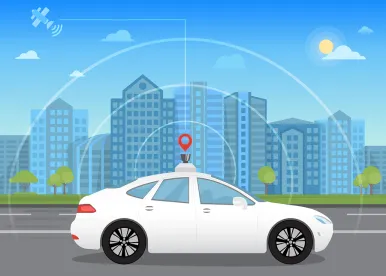Florida is the latest state to allow vehicles to operate on the road without a steering wheel. In doing so, Florida became the third state after Michigan and Texas to allow vehicles on its roads without a human even having the ability to drive them. The legislation signed into law includes:
The bill authorizes operation of a fully autonomous vehicle on Florida roads regardless of whether a human operator is physically present in the vehicle. Under the bill, a licensed human operator is not required to operate a fully autonomous vehicle. The bill authorizes an autonomous vehicle or a fully autonomous vehicle equipped with a teleoperation system to operate without a human operator physically present in the vehicle when the teleoperation system is engaged. A remote human operator must be physically present in the United States and be licensed to operate a motor vehicle by a United States jurisdiction.
Florida is sure to become a hotbed of autonomous vehicle testing with this new law. Starsky Robotics is one of the companies expected to take advantage by putting driverless vehicles on the road in 2020. These would not be just any vehicles, but big rig trucks. These trucks have already hit 55 mph, without a driver or crew. Most predict that this is just the beginning with as many as eight million autonomous vehicles expected on the road by 2025 and 30 million by 2030. Of course, the devil is in some of the details. There are six levels of autonomous vehicles, with level 5, Full Automation, being the highest.
Not everyone agrees that this is all happening so quickly. As the New York Times noted, “A growing consensus holds that driver-free transport will begin with a trickle, not a flood.” Of course, this makes sense. Outside of people with a vested interest (we are looking at you Mr. Musk), few seem to truly believe that millions of level 5, completely driverless vehicles will be on the road.
But this does not mean that they will not make an impact. While vehicles may not be navigating complex systems in dense areas next year, they are likely to find plenty of uses. Gated communities with known road structures and limited traffic might be a good location for the first generation of fully autonomous vehicles. And think of the myriad of shuttles at various locations that run the same route, over and over, day after day. That seems like a good use of a fully autonomous vehicle run by something other than gasoline. How about college campuses, with autonomous vehicles running all day and all night providing safe routes and passage for vulnerable students at all hours. Suffice to say, the day when people can wake up, get into a fully autonomous vehicle, and go to sleep while it takes them to work is perhaps not something the current work force will enjoy (except apparently for the occasional Tesla rider taped sleeping behind the wheel).
But whatever generation comes after Generation Z is unlikely to know a driving experience like what exists today, if there is any driving at all. Will they even drive at all, or will they fly in their autonomous flying cars? Project Vahana aims to offer just that. In their own words: “Project Vahana intends to open up urban airways by developing the first certified electric, self-piloted vertical take-off and landing (VTOL) passenger aircraft.” Getting to work will never be easier. Unless of course, all this transportation runs into the fact that everyone works remotely.




 />i
/>i
